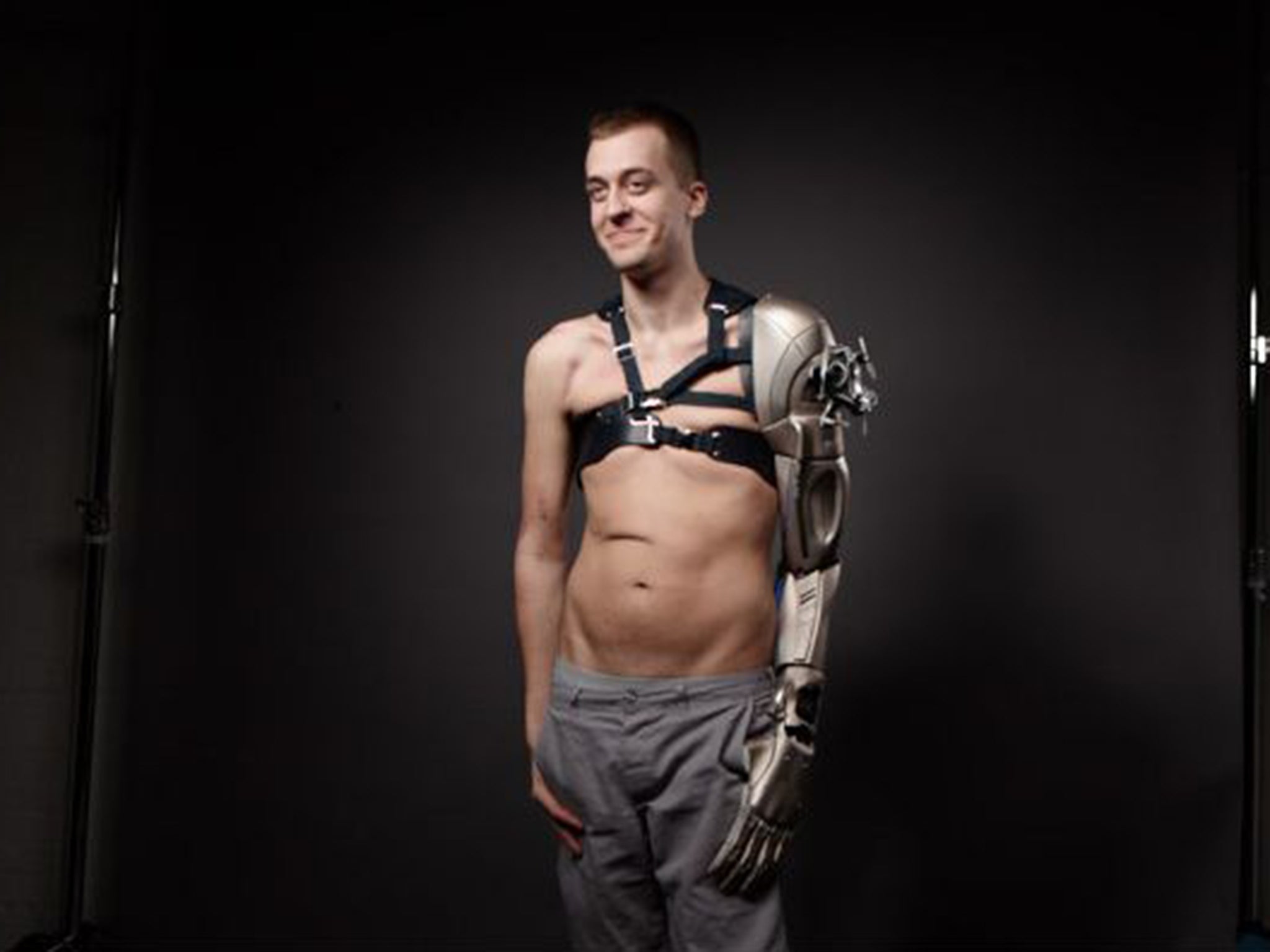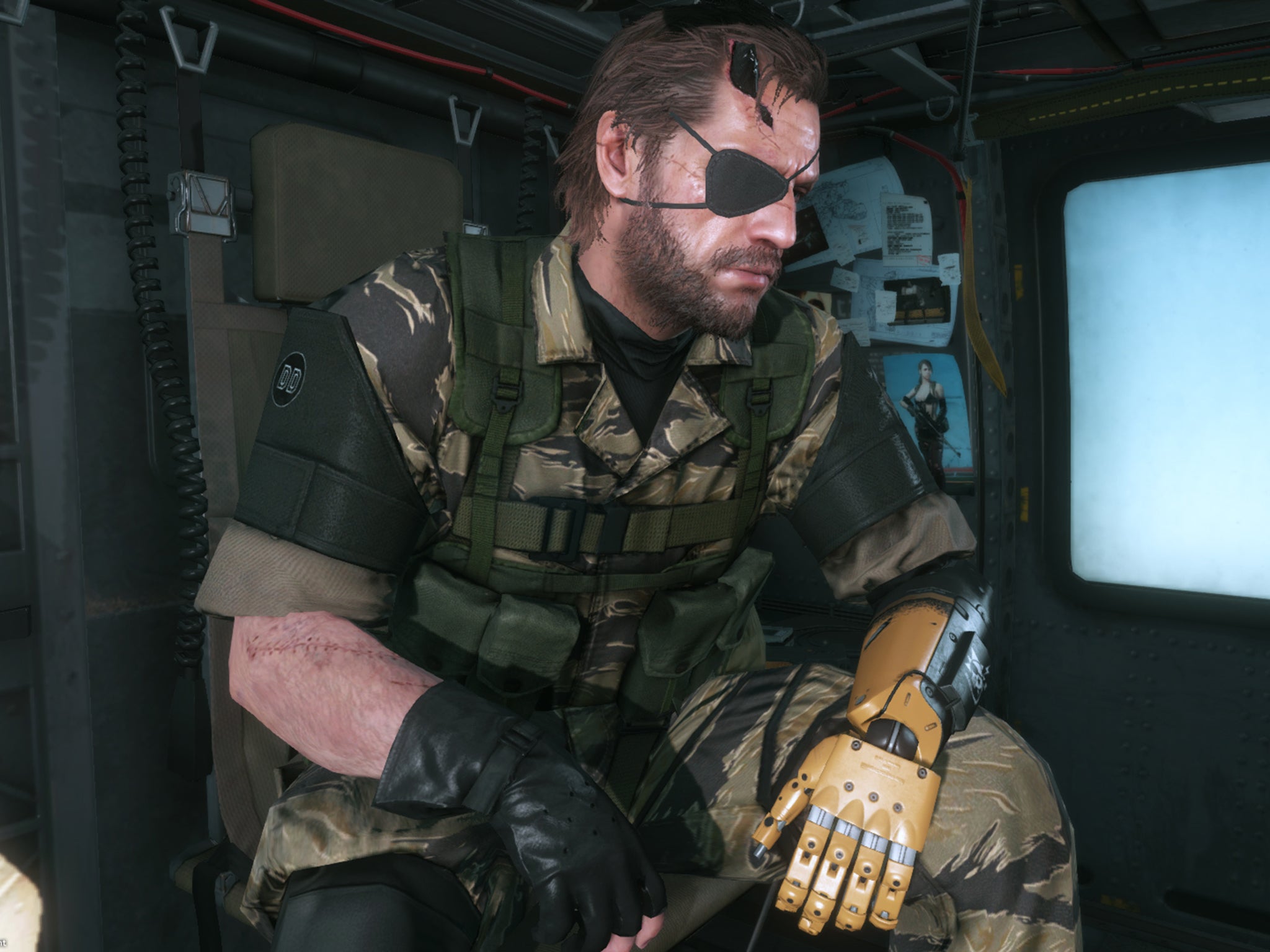Prosthetics: Amputee James Young unveils hi-tech synthetic arm inspired by Metal Gear Solid
The 25-year-old's £60,000 carbon-fibre limb is part art project and part engineering marvel

The job advertisement was highly specific: applicants had to be passionate about computer games and live in the UK. Oh, and they also had to be amputees who were interested in wearing a futuristic prosthetic limb.
James Young knew straight away he had a better shot than most. After losing an arm and a leg in a rail accident in 2012, the 25-year-old Londoner had taught himself to use a video-game controller with one hand and his teeth. “How many amputee gamers can there be?” he asked himself.
In the end, more than 60 people replied to the ad, which was looking for a games-mad amputee to become the recipient of a bespoke high-tech prosthetic arm inspired by Metal Gear Solid, one of the world’s best-selling computer games. Designed and built by a team of 10 experts led by London-based prosthetic sculptor Sophie de Oliveira Barata, the £60,000 carbon-fibre limb is part art project, part engineering marvel.
For Mr Young, who unveiled the new prosthetic on Saturday at BodyHacking Con 2016, a conference in Texas devoted to “human augmentation”, the synthetic limb is likely to be life-changing, both in terms of its functionality and the levels of attention it will bring him. “I’ll be on stage in Texas talking about it,” he said before boarding his flight to the United States. “That will be a different level of attention – I’ll have to get used to it.”
The limb is fitted with a 3D-printed hand that is controlled by sensors that detect minute muscle movements in Mr Young’s back. Designed by Bristol firm Open Bionics, it is substantially more dextrous than the rudimentary NHS prosthetic he acquired following his accident.

Dexterity – the ability to grip a bottle, give a thumbs-up signal or offer a handshake – is only part of the story. The arm also features a torch, a laser and banks of LED lights that can be programmed to display different colours or synchronised with Mr Young’s heartbeat. There is a USB port in the wrist for charging phones or uploading data to a display panel, and a mount for a miniature quadcopter – a tiny drone – that can be controlled using one hand from a panel mounted on the forearm.
Mr Young won’t suffer from a lack of data either. A miniature screen mounted in the arm will display his Twitter feed and email. The unusual project was inspired by the release of the latest edition of Metal Gear Solid, a game that has sold more than 40 million copies worldwide. In Metal Gear Solid V: The Phantom Pain, the game’s protagonist, Snake, awakes from a coma to learn his shattered left arm is to be replaced with a synthetic limb capable of detecting minute vibrations, unleashing bolts of electricity and punching out adversaries.
Mr Young, an account executive at a medical communications company, admits he has little in common with Snake, a tough-as-guts former Green Beret who is fluent in six languages and specialises in solo spying missions. But the young Londoner was familiar with Metal Gear Solid’s retro-futuristic aesthetic. During his rehabilitation he spent hours using a games console, learning to use the controller with one hand, his chin and, occasionally, his teeth.
Although he was fascinated by the project, Mr Young didn’t want to end up looking like a sci-fi “killing machine” or becoming a walking, talking advertisement for a computer game – a kind of cyborg billboard. Fortunately, Ms de Oliveira Barata and Konami, the game’s publisher, didn’t want him to be.
“No one has made me sign a contract saying I have to make a certain number of appearances or anything like that,” said Mr Young. “If I wanted I could do the big reveal [in Texas] and disappear.”
Ms de Oliveira Barata, who has created a series of artistic prosthetics including a crystal-studded leg for the model and amputee Viktoria Modesta, said the idea of a company sponsoring a body part is “clearly a bit tricky.” But, she said, “James’s arm is completely bespoke, and it was really important for all of us that it encapsulated his idea of what he wanted from a prosthetic.”
A spokeswoman for Konami described the project as “a kind of social piece” that shows how a disability can “be overcome in a positive way”.
So, unlike Snake, Mr Young won’t be able to fell an antagonist with a “rocket punch” or an electric shock. His arm is a different colour from the prosthetic featured in the computer game, and its contours are considerably smoother. “I don’t think I’m Snake,” said Mr Young. “Pretty much everyone in his team has had some sort of terrible accident and they’re all very bitter about it and embarking on a big revenge spree. That’s definitely not me.”
Join our commenting forum
Join thought-provoking conversations, follow other Independent readers and see their replies
Comments